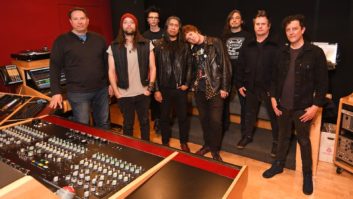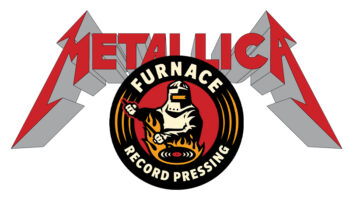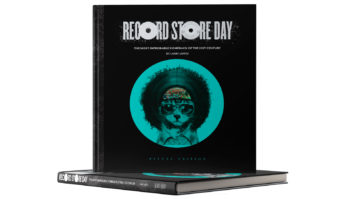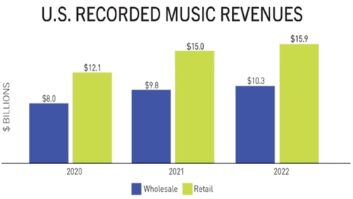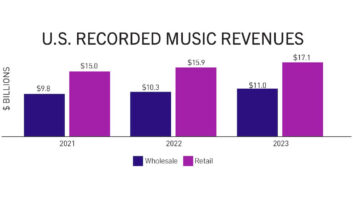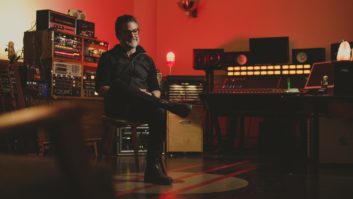Hollywood, CA (April 24, 2018)—Is the world ready for the return of quadraphonic vinyl records? KamranV, co-founder of Bedrock.LA, a multi-room rehearsal and production facility in the Echo Park neighborhood of Los Angeles and former president and CTO of Moogfest, believes the answer is yes.
In March 2016, keyboardist, composer and sound designer Suzanne Ciani gave her first solo performance on a Buchla synthesizer in nearly 40 years, at Gray Area in San Francisco. The presentation was in quad, mixed live by Ciani from the Buchla 200e, a twenty-first century recreation of the classic early-seventies synthesizer. The performance, recorded by Vance Galloway, was played back later that same year at the North Carolina Museum of Art at Moogfest.
Kamran says he learned a valuable lesson while he was helping program Moogfest: “You found that you learned a lot by looking backward to look forward.” And when he saw the reaction to Ciani’s piece, he says, “Something clicked; I realized there was an opportunity here.” The result was that he wanted to release Ciani’s performance in an analog format that, much like the Buckla synthesizer, would harken back four decades ago: quadraphonic vinyl. The challenge, however, was to figure out how to make that happen.
As a format, quadraphonic vinyl had its heyday in the Seventies, but unlike its stereo counterpart, hasn’t enjoyed a modern-day resurgence. The reasons are largely technical. Quad decoders ceased to be commercially available in home hi-fi systems as the popularity of the format waned. Further, there was no standard quad format, just a lot of confusing brands: QS, SQ, EV-4, CD-4, UD-4. Some codecs matrix-encoded four tracks into the stereo groove while others were discrete, requiring a special turntable stylus.
Kamran has a past in DVD-Audio and SACD, including work on Beck’s Guero album, which was mixed in stereo and 5.1 by producers the Dust Brothers and Elliot Scheiner, so he jumped headfirst into research of quad technology and spatial techniques. Some practitioners, he discovered, “are trying so hard for realism that they miss the fuzzy edges of the art. The people that are well practiced on the art side aren’t necessarily the same people that are well practiced on the tech side.”
He kept digging. Audio writer and photographer Mr. Bonzai (David Goggin) introduced him to veteran mastering engineer Bernie Grundman, who in turn introduced him to his Hollywood mastering facility’s technical director, Beno May, for research assistance. “Beno started reaching out to friends in Japan,” says Kamran.
Meanwhile, he discovered Richard Brice in France, whose Stereo Sauce restoration software can decode legacy formats for playback on 5.1 Dolby systems. Happily, the math behind the quad codec—which is credited to Peter Scheiber, who demonstrated it at the 1970 AES Convention—is essentially the same, whatever the codec type, Kamran reports. When he asked if Brice also had encode software, he replied that he could reverse engineer it, and turned around Kamran’s test file, quad-encoded, within a day.
Kamran, formerly technical director for Sonos Studio in Los Angeles, rejigged his Playbar, Connect boxes and wireless Play One 5.1 speaker setup so that he could listen to the test file out of his Mac laptop and through Brice’s Dolby converter. “The math worked, so I knew I could do it. But would it work on vinyl?”
May and Scott Sedillo, the other member of Bernie Grundman Mastering’s technical department, were kind enough to do a test cut on a flawed dub plate, says Kamran, who lugged his hardware decoder to the facility for playback. “There are only two speakers in the mastering room, but it worked,” he says.
“If you listen to QS or SQ records, they have crazy psychoacoustics just from two speakers. The reason why SQ picked up so much popularity is because the stereo spread was better in the two-track.”
He took the dub plate home and played it on his quad Sonos rig, and it did work. “Now I know I can make it—but how can everyone else hear it?”
Kamran reached out to “Quad Bob” Herndon, formerly of San Diego and now resident in Japan, whom he had found though an internet forum. “Bob, it turns out, is the second-largest collector of quadraphonic equipment in the world. And of course, he knows the biggest collector.”
Herndon hooked him up with Odaka Shuichi, who was building his own analog encoder and decoder. “Odaka-san has done a bunch of tests and listening for me. They’ve both been amazing collaborators.”

Herndon also turned Kamran on to an Australian company, Involve Audio. “They make spatializers and high-end audiophile equipment and have these prototype quad kits in their own flavor of QS. The steering logic is a little bit different, but it works just like Seventies encoders and decoders.”
The Suzanne Ciani album, LIVE Quadraphonic, mastered by Sedillo and cut to 12-inch vinyl at 45 rpm by Chris Bellman and Sedillo, will be available this summer via Kamran’s company, Cykik, in a package roughly the size of a 2-inch tape reel box that will include an Involve Audio hardware decoder. “We’re only going to sell 200 of them,” says Kamran, adding, “Bob [Herndon] says this is the first quad vinyl release that he has heard of in about 30 years.”
The release, complete with decoder, could kickstart a quad resurgence. Sedillo, who is also the founder of Pueblo Audio, making preamps and DI boxes, specializes in live recording and can see the potential. “My argument is that the real music is being performed live these days,” says Sedillo. “If you were to make a recording that was minimalist, intended for the quad format, it would have potency and vitality. Just get a good performer, some good mics, a good engineer and cut it to vinyl from tape.”
Kamran agrees, and comments, “We’re past making it possible; now it’s about making it good.”
Cykik • www.cykik.com/quad
Suzanne Ciani • www.sevwave.com
